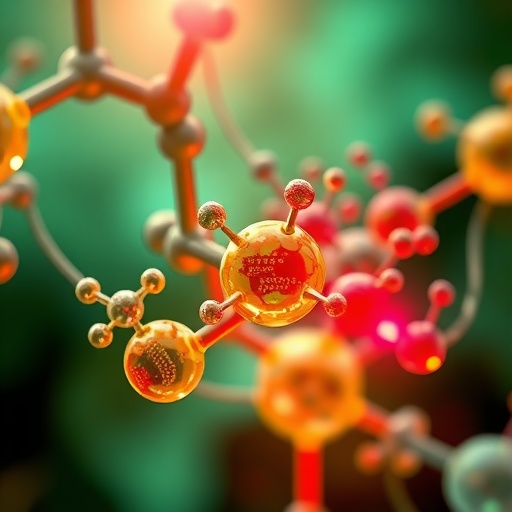Revolutionizing Metabolomics: A Breakthrough Ion-Exchange Chromatography-Mass Spectrometry Protocol
In a landmark development poised to transform the field of metabolomics, researchers from Oxford University’s Department of Chemistry, led by Professor James McCullagh, have unveiled an innovative analytical protocol that markedly advances the large-scale analysis of metabolites in biological samples. This novel technique, described in a study published today in Nature Protocols, integrates anion-exchange chromatography with mass spectrometry (AEC-MS) in a way that overcomes longstanding technical challenges associated with the direct coupling of ion-exchange systems to mass spectrometers.
Metabolomics, the large-scale study of small molecules or metabolites within cells, tissues, and biofluids, is a cornerstone of modern systems biology and medicine. Metabolites, reflecting the dynamic physiological state of biological systems, act as sensitive biomarkers that can illuminate disease states, metabolic function, and responses to environmental stimuli. However, the complex chemical nature and polarity of many metabolites have historically impeded their comprehensive analysis, particularly highly polar and ionic species.
.adsslot_YgjcQVI2bD{ width:728px !important; height:90px !important; }
@media (max-width:1199px) { .adsslot_YgjcQVI2bD{ width:468px !important; height:60px !important; } }
@media (max-width:767px) { .adsslot_YgjcQVI2bD{ width:320px !important; height:50px !important; } }
ADVERTISEMENT
The core of this breakthrough lies in the methodological advancement of employing electrolytic ion-suppression within anion-exchange chromatography to facilitate direct and stable interfacing with high-resolution mass spectrometry. Ion-exchange chromatography itself has been a fundamental technique since the 1970s, prized for its ability to separate charged molecules. But its adaptation to modern mass spectrometry — essential for detailed molecular identification — has been hampered by incompatibilities due to high salt concentrations used in traditional protocols.
This new AEC-MS protocol elegantly circumvents these obstacles using an innovative electrolytic suppression mechanism. This approach effectively removes interfering ions post-chromatographic separation without resorting to extensive sample preparation or dilution. As a result, the mass spectrometer receives a cleaner, more concentrated analyte stream. This technical refinement enhances detection limits, specificity, and reproducibility, catapulting the method’s utility for metabolomics research.
Rachel Williams, a D.Phil. student deeply involved in this project, emphasizes the novelty and impact: “Ion-exchange chromatography offers a retention and elution mechanism that differs fundamentally from other separation techniques used in metabolomics. By overcoming historical barriers with the integration of electrolytic ion-suppression, we are opening new frontiers for identifying and quantifying metabolites previously difficult to analyze.”
The significance of this advancement spans multiple scientific disciplines. Metabolomics synergizes with genomics and proteomics to provide multi-dimensional insight into biological systems. With precise metabolic profiling, researchers can decipher networks of biochemical reactions, trace perturbations induced by disease or drugs, and identify novel biomarkers for diagnostics. The ability to reliably analyze polar and ionic metabolites expands the molecular universe accessible to inquiry.
Practical applications of this technology are already evident. Collaborative studies involving Oxford’s Kennedy Institute leveraged the technique to unravel the metabolic interplay between the gut microbiome and host immune function. Here, AEC-MS facilitated detection of circulating butyrate, a critical microbiome-derived short-chain fatty acid instrumental in modulating immune responses. Such insights deepen understanding of host-microbiome crosstalk and offer promising therapeutic avenues.
In another forefront application, the protocol was employed to investigate pancreatic β-cell metabolism in diabetes. The researchers found that elevated glucose inhibits key glycolytic and mitochondrial enzymes—GAPDH and PDH—causing accumulation of upstream metabolic intermediates. These metabolic shifts altered gene expression and impaired insulin secretion, linking metabolic dysregulation to diabetic pathology at an unprecedented molecular resolution.
Professor McCullagh outlines the future potential: “This new metabolomics approach not only broadens existing capabilities but also propels us into new research territories. Our ongoing projects examine antimicrobial resistance impacts on bacterial metabolism, the early detection of cancer biomarkers, as well as diverse microbiome metabolic pathways. The flexibility and sensitivity of AEC-MS will be a cornerstone in these efforts.”
Beyond its analytical power, the method is notable for its scalability and applicability across various biological matrices—cells, tissues, and biofluids—making it highly versatile for both basic research and clinical diagnostics. The enhanced molecular specificity provided by ion-suppression coupled with mass spectrometry enables more confident identification and quantification of metabolites, catalyzing discoveries that require detailed metabolic profiling.
The innovation also resonates with larger trends in systems biology and analytical chemistry, where the integration of advanced separation techniques with mass spectrometry continues to unlock increasingly complex biochemical landscapes. The McCullagh Group’s work exemplifies how refining classical methodologies with contemporary technology can yield transformative results.
Importantly, the new AEC-MS protocol streamlines workflows and decreases sample processing time compared to traditional approaches reliant on extensive desalting or derivatization prior to mass spectrometry. This efficiency, combined with heightened sensitivity, holds promise for high-throughput metabolomics studies essential in biomarker discovery and personalized medicine.
The technique’s introduction comes at a critical juncture as metabolomics intensifies its role in unraveling human health and disease complexities. Precise metabolic profiling can reveal early disease markers, track therapeutic efficacy, and inform nutrition and environmental exposure assessments. The capability to profile a broader range of metabolites reliably is thus integral to advancing these frontiers.
In sum, the development of anion-exchange chromatography-mass spectrometry with electrolytic ion-suppression represents a significant leap, addressing a technical bottleneck that has limited metabolite analyses for decades. By enabling enhanced detection of troublesome polar and ionic metabolites with ease and accuracy, this protocol promises to reshape metabolomic research workflows and deepen our biochemical understanding of life.
Subject of Research: Metabolomics and analytical chemistry methods for metabolite analysis using AEC-MS
Article Title: Metabolomics using anion-exchange chromatography mass spectrometry for the analysis of cells, tissues and biofluids
News Publication Date: 22 August 2025
Web References:
https://doi.org/10.1038/s41596-025-01222-z
https://mccullaghgroup.web.ox.ac.uk/home
https://pubs.acs.org/doi/10.1021/acs.analchem.2c04298
https://www.cell.com/immunity/fulltext/S1074-7613%2818%2930566-1
https://www.nature.com/articles/s41467-022-34095-x
References:
Ngere et al., Analytical Chemistry, 2023
Schulthess et al., Immunity, 2019
Haythorne et al., Nature Communications, 2023
Image Credits: Isabelle Legge
Keywords
Metabolomics, Anion-exchange chromatography, Mass spectrometry, Ion-suppression, Electrolytic suppression, Polar metabolites, Ionic metabolites, Metabolic pathways, Gut microbiome, Biomarkers, Diabetes metabolism, Analytical chemistry
Tags: anion-exchange chromatographybiological sample analysisbiomarkers in disease statesbreakthrough metabolomics techniquecomplex metabolite analysiselectrolytic ion-suppression methodlarge-scale metabolite analysismass spectrometry advancementsNature Protocols publicationOxford University researchProfessor James McCullaghsystems biology innovations





